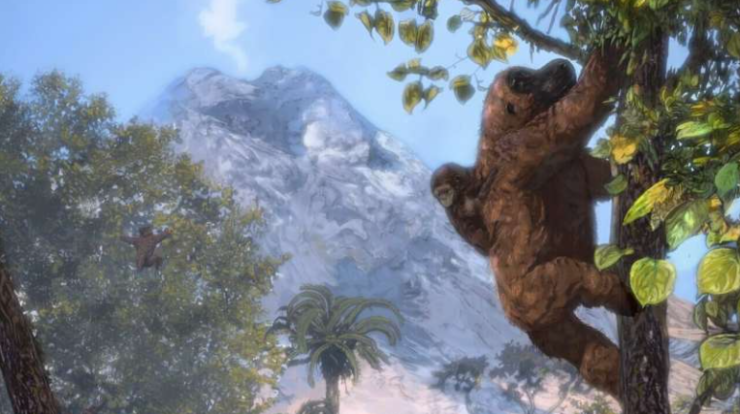We’ve long thought that our ape ancestors developed an upright trunk to gather fruit in forests, but new research from the University of Michigan claims a diet that included leaves in open woodlands drove apes’ upright stature.
The research sheds light on the origin of apes and traces the origin of grassy woodlands from 7 million and 10 million years ago to 21 million years ago in equatorial Africa during the Early Miocene.
The fruit grows on the rickety sides of trees. To reach the fruit, the great apes have to distribute their weight on the branches coming out of the trunk and then reach for the fruit with their hands. This is much easier if a monkey is standing upright because it can more easily hold on to different branches with its hands and feet. If its back is horizontal, its hands and feet are usually under the trunk, making it difficult to move towards the smaller branches (especially if the monkey is large bodied).
According to researchers Laura MacLatchy and John Kingston, this is how modern day monkeys reach fruit, but why monkeys evolved to stand upright stature is a matter of research.
The new research, led by MacLatchy, focuses on a 21 million year old ape fossil called Morotopithecus and suggests that this may not be the case. The researchers think the early monkeys ate leaves and lived in a seasonal woodland with a broken canopy and open, grassy areas. They suggest that this landscape, rather than fruit in closed-canopy forests, caused the monkeys’ steep stature.
“These findings have transformed what we thought we knew about early apes, and the origin of where, when and why they navigate through trees and on the ground in different ways. For the first time, by combining lines of evidence, this team tied specific aspects of early apes’ anatomy to environmental changes in their habitat in eastern Africa, which is more open and less forested than previously thought. The effort outlines a new framework for future studies on ape evolutionary origins.” said Robin Bernstein, a program director for biological anthropology.
Cover Photo: Reconstruction of open woodland habitat with Morotopithecus climbing vertically with her infant on her back. Active volcano (Mount Moroto) in the background. Credit: Corbin Rainbolt
